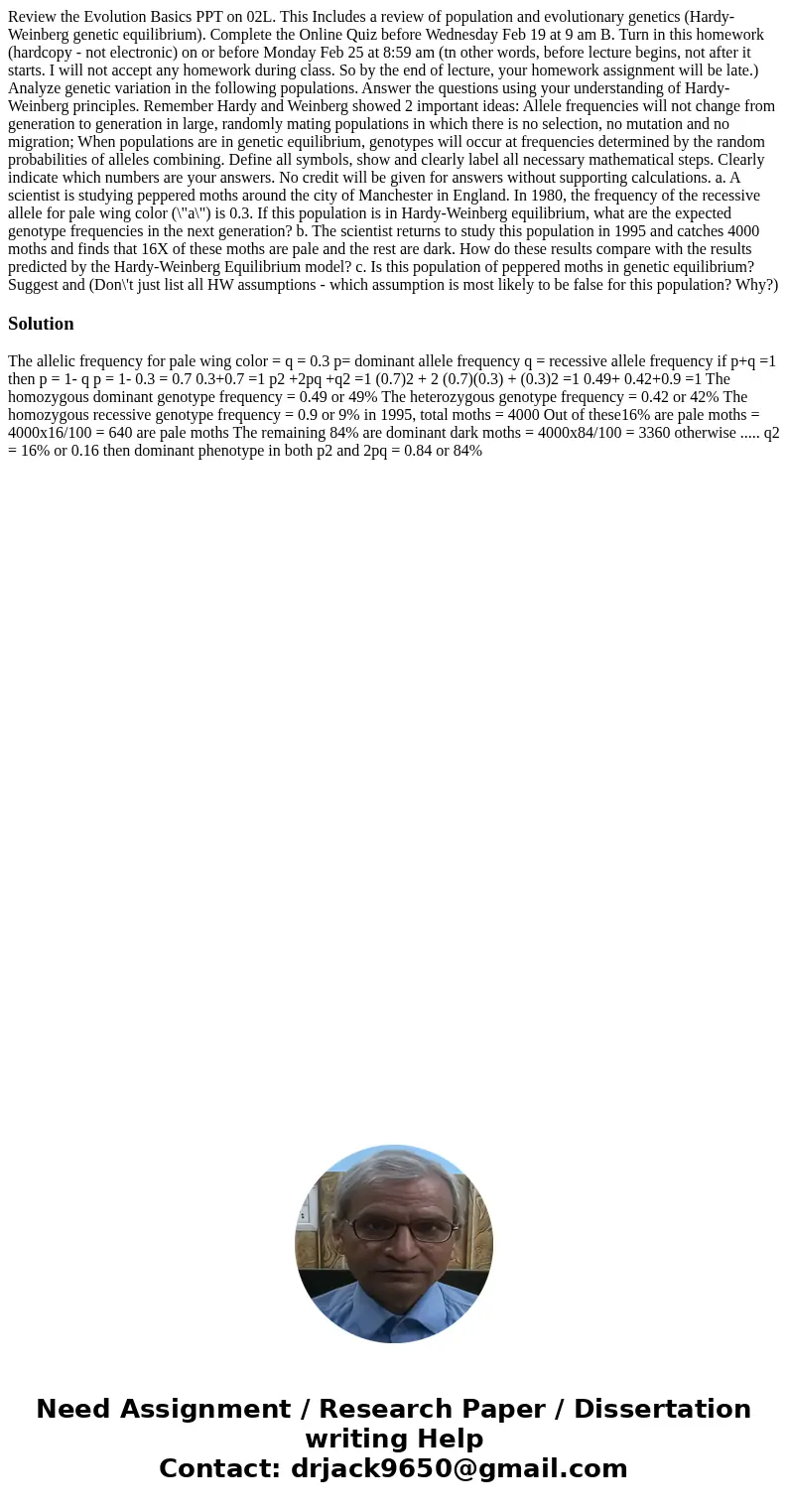Review the Evolution Basics PPT on 02L This Includes a revie
Review the Evolution Basics PPT on 02L. This Includes a review of population and evolutionary genetics (Hardy-Weinberg genetic equilibrium). Complete the Online Quiz before Wednesday Feb 19 at 9 am B. Turn in this homework (hardcopy - not electronic) on or before Monday Feb 25 at 8:59 am (tn other words, before lecture begins, not after it starts. I will not accept any homework during class. So by the end of lecture, your homework assignment will be late.) Analyze genetic variation in the following populations. Answer the questions using your understanding of Hardy-Weinberg principles. Remember Hardy and Weinberg showed 2 important ideas: Allele frequencies will not change from generation to generation in large, randomly mating populations in which there is no selection, no mutation and no migration; When populations are in genetic equilibrium, genotypes will occur at frequencies determined by the random probabilities of alleles combining. Define all symbols, show and clearly label all necessary mathematical steps. Clearly indicate which numbers are your answers. No credit will be given for answers without supporting calculations. a. A scientist is studying peppered moths around the city of Manchester in England. In 1980, the frequency of the recessive allele for pale wing color (\"a\") is 0.3. If this population is in Hardy-Weinberg equilibrium, what are the expected genotype frequencies in the next generation? b. The scientist returns to study this population in 1995 and catches 4000 moths and finds that 16X of these moths are pale and the rest are dark. How do these results compare with the results predicted by the Hardy-Weinberg Equilibrium model? c. Is this population of peppered moths in genetic equilibrium? Suggest and (Don\'t just list all HW assumptions - which assumption is most likely to be false for this population? Why?)
Solution
The allelic frequency for pale wing color = q = 0.3 p= dominant allele frequency q = recessive allele frequency if p+q =1 then p = 1- q p = 1- 0.3 = 0.7 0.3+0.7 =1 p2 +2pq +q2 =1 (0.7)2 + 2 (0.7)(0.3) + (0.3)2 =1 0.49+ 0.42+0.9 =1 The homozygous dominant genotype frequency = 0.49 or 49% The heterozygous genotype frequency = 0.42 or 42% The homozygous recessive genotype frequency = 0.9 or 9% in 1995, total moths = 4000 Out of these16% are pale moths = 4000x16/100 = 640 are pale moths The remaining 84% are dominant dark moths = 4000x84/100 = 3360 otherwise ..... q2 = 16% or 0.16 then dominant phenotype in both p2 and 2pq = 0.84 or 84%
 Homework Sourse
Homework Sourse